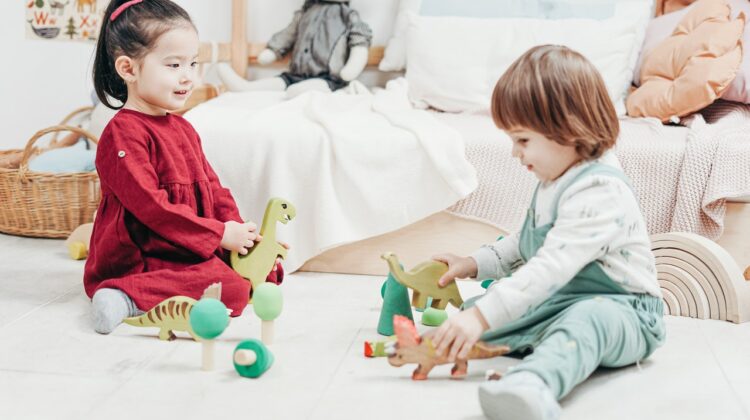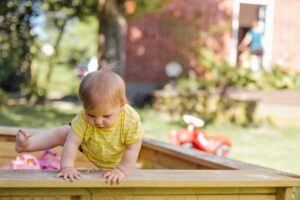
Raising children has never been easy, especially if you’re a first-time parent trying to raise a toddler. The first thing you’ve got to do is toddler-proof your house. Yes, you read that right, toddler-proofing your home. It’s every parent’s duty to keep their child safe, and they try their best. Still, a lot of incidents can happen which could cause the toddler harm. So lets learn about the ways to protect your toddlers from dangers at home.
Compared to older kids or babies, toddlers require extra care, protection, and safety measures for danger-proofing. As toddlers are just learning to move around and get a sense of independence, they’re naturally bound to get themselves into danger or accidents around the house. Therefore, to prevent the accidents from happening, you need to make your house more safe and secure for your toddler.
There are many objects in a typical household that can cause a toddler damage, such as machines, toys, electricity, furniture, the stove, sharp objects, etc. In addition to providing a safe environment and taking preventive measures, you should also educate your child about what is right and wrong.
So, to help you create a safe and secure toddler-proof home, we’re going to talk about some effective measures that you can take to protect your toddler.
Ensure a Safe Environment
First and foremost, make sure your toddler grows up in a safe environment. You must ensure that the environment in your home is free from germs and diseases. In addition, you should make sure your house is asbestos-free. Asbestos is a harmful chemical used in making homes that can cause a rare form of cancer called mesothelioma.
You should remove any trace of the harmful agent from your house for the health of your children and for your own health. If you have symptoms of a cough or chest pain, you should go and consult a mesothelioma doctor, and get yourself evaluated.
Burn Prevention
Toddlers are prone to burning themselves. Keep them away from stoves, microwaves, heaters, fires, and hot surfaces in order to protect them.
Children can scald themselves as a result of touching hot food, drinks, and hot baths. Keep your child away from hot water and check your water temperature before you put your child in the bath. A safe bathing temperature is 37-38 degrees Celsius.
A Safe Electric System
It is important to replace worn-out electrical cords and also cover any exposed power plugs to your toddler safe from electrocutions. Don’t let them stick their fingers inside switches. You should cover the plugs with tape when not in use.
Fall Protection

After burns, toddlers are often falling and hurting themselves. As soon as your toddler begins to crawl, install safety barriers at the entrances to stairs and balconies.
Research shows that a toddler falls 38/times a day. Be sure to monitor your child when on balconies and keep them away from descending or ascending the stairs.
Lock windows, especially windows in the upper floors, restrict window openings or install window guards if your child starts to climb them.
Similarly, leave a hall light on so older kids can safely navigate the hallway. You can also install censor lights as well. Secure windows with child safety locks or window guards on them. Also, consider moving cribs, recliners, and sofas away from the windows, so that children can’t climb over, reducing the risk of falling out.
Protection from Water
It is important to supervise your child when near the water. These include bathtubs, swimming pools, ponds, dams, rivers, creeks, buckets of water, and so on.
Children who have survived drowning, five to ten percent of them suffer from permanent disabilities like hemiplegia or persistent vegetative state (loss of the use of the torso and all four legs). It is a good idea to know how to give CPR and to have a lock on the bathroom or pool gate.
Fire Safety
House fires can be caused by neglect, smoking debris, electrical problems, candles, incense, or young children playing with lighters and flames.
Functioning smoke alarms can prevent fires from spreading. Smoke alarms should be installed near the sleeping areas of your home. It is a very smart idea to install alarms in rooms where people sleep with their doors locked.
Learn how to use fire extinguishers. Make sure you always have a functioning fire extinguisher around.
Furniture Handling
Children often hit themselves on furniture, which can cause injuries. Keep furniture in a safe place where children cannot crawl onto them easily. You can reduce the risks of furniture falling on top of the toddler by anchoring them to the wall or floor. You should also anchor the TV to the wall.
Similarly, furniture with hard edges should not be placed near doorways or other areas where children might play. If you cannot move the furniture, use foam or corner protectors to cushion its corners.
To keep televisions, bookcases, dressers, and other large objects in place in any room where your child may be left alone, even for a short time, use furniture straps.
Do not keep TVs on top of dressers. Toddlers might use dressers as climbing platforms. Be sure sharp edges of the furniture are protected by edge bumpers or corner bumpers.
Backyard and Tool Safety
Make sure that all tools (for yard work, car maintenance, gardening, etc.) are out of the way or locked away safely. Check your swing set and other outdoor play equipment and make sure they do not have sharp edges, splinters, or corrosions. Keeping tools within your child’s reach can add to the possibility of getting hurt.
You should keep lawn mowers, chainsaws, and other sharp instruments, along with hand tools like saws and drills, out of reach. Keep your child away from using tools. Turn off the power and put the tools away when you’re done to protect your toddlers from those dangers at home.
Preventive Measures
Whether you are expecting or already have children, you should learn the Heimlich maneuver and cardiopulmonary resuscitation (CPR).
Likewise, add important emergency numbers to your contact list on your phone. For example, your doctor’s office and cell phone number, your parents’ workplace and cell phone number, and the toll-free poison control hotline (if you are in need of someone to watch other children in an emergency).
Prepare a first aid kit and include emergency information inside. If necessary, fill it out. Make sure smoke and carbon monoxide detectors are installed in your house.
The Takeaway
In all, we are aware that raising children isn’t easy, and being parents, your topmost priority is to ensure their safety. So, we hope that the information provided in this blog will help in making your place a bit safer for the toddlers.
Please leave your inputs on how to protect toddlers from dangers at home. We are all ears!
Leave a Reply